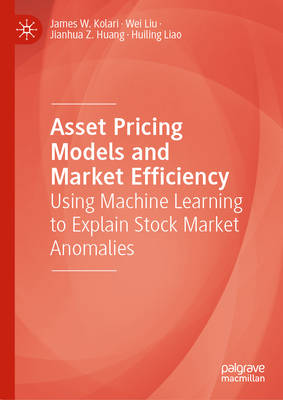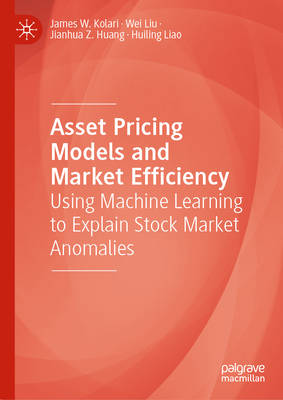
Je cadeautjes zeker op tijd in huis hebben voor de feestdagen? Kom langs in onze winkels en vind het perfecte geschenk!
- Afhalen na 1 uur in een winkel met voorraad
- Gratis thuislevering in België vanaf € 30
- Ruim aanbod met 7 miljoen producten
Je cadeautjes zeker op tijd in huis hebben voor de feestdagen? Kom langs in onze winkels en vind het perfecte geschenk!
- Afhalen na 1 uur in een winkel met voorraad
- Gratis thuislevering in België vanaf € 30
- Ruim aanbod met 7 miljoen producten
Zoeken
Asset Pricing Models and Market Efficiency
Using Machine Learning to Explain Stock Market Anomalies
James W Kolari, Wei Liu, Jianhua Z Huang, Huiling Liao
Hardcover | Engels
€ 137,45
+ 274 punten
Omschrijving
This book shows that the stock market returns of hundreds of anomaly portfolios discovered by researchers in finance over the past three decades can be explained by a recent asset pricing model dubbed the ZCAPM. Anomaly portfolios are long/short portfolio returns on stocks that cannot be explained by asset pricing models, and their number has been steadily increasing into the hundreds. Since asset pricing models cannot explain them, behavioral theories have become popular to account for anomalies. Unlike the efficient market hypothesis that assumes rational investors, these human psychology-based theories emphasize irrational investor behavior. This book collects and analyzes a large database of U.S. stock returns for anomaly portfolios over a long sample period spanning approximately 60 years. The authors overview different asset pricing models that have attempted to explain anomalous portfolio returns in the stock market. They then provide a theoretical and empirical discussion of a new asset pricing model dubbed the ZCAPM and report compelling empirical evidence that reveals the ZCAPM can explain hundreds of anomalies. Implications to the efficient-markets/behavioral-finance controversy are discussed. The book will be of particular interest to researchers, students, and professors of capital markets, asset management, and financial economics alongside professionals.
Specificaties
Betrokkenen
- Auteur(s):
- Uitgeverij:
Inhoud
- Aantal bladzijden:
- 209
- Taal:
- Engels
Eigenschappen
- Productcode (EAN):
- 9783031929007
- Verschijningsdatum:
- 14/01/2026
- Uitvoering:
- Hardcover
- Formaat:
- Genaaid
- Afmetingen:
- 148 mm x 210 mm

Alleen bij Standaard Boekhandel
+ 274 punten op je klantenkaart van Standaard Boekhandel
Beoordelingen
We publiceren alleen reviews die voldoen aan de voorwaarden voor reviews. Bekijk onze voorwaarden voor reviews.









